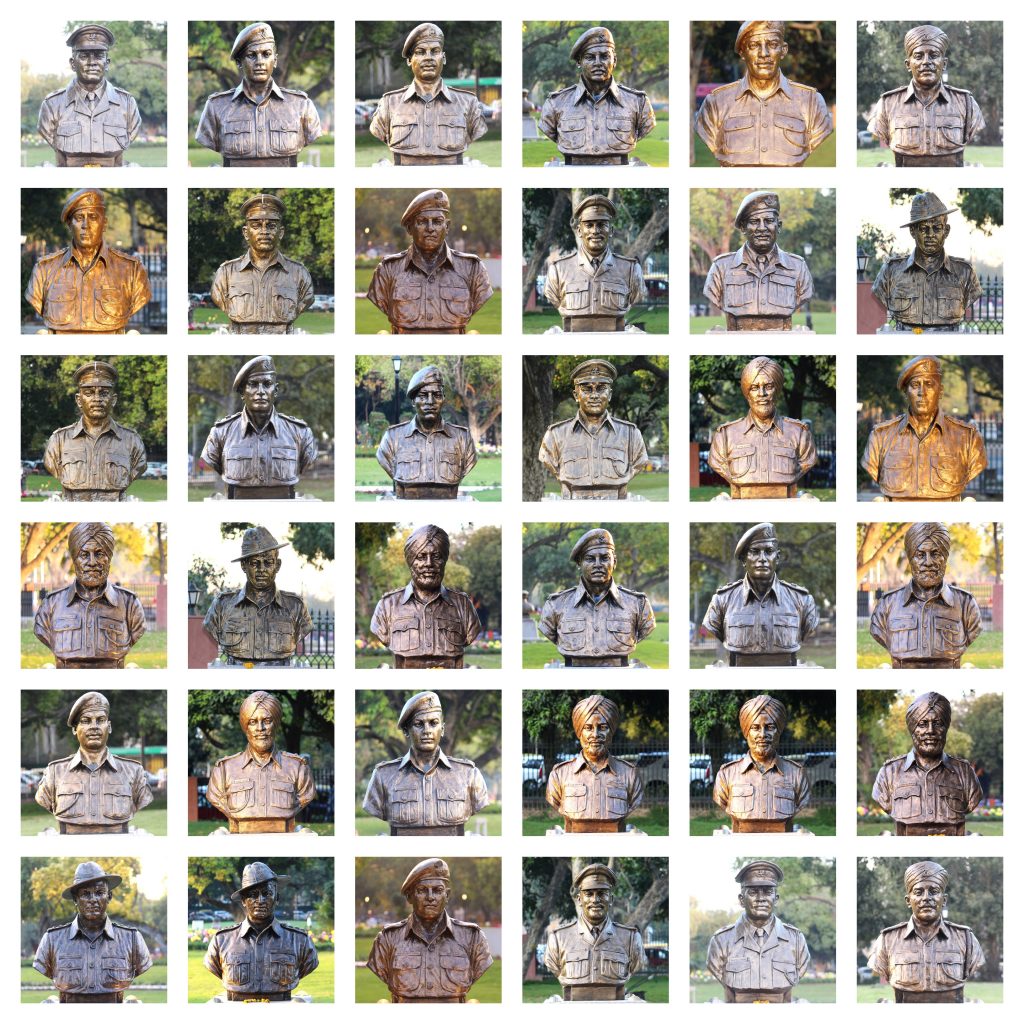PARAM VIR CHAKRA (PVC) is India’s highest and most prestigious military decoration, awarded to those who risk their lives above and beyond the call of duty during wartime. It is stated as the “Greatest of the Ultimate Brave”, or ‘Wheel or Cross of the Ultimate Brave,’ and the award is granted for “most eminent bravery in the presence of the enemy.” Such is the expectation that It is almost impossible to win a PVC. In the last 70 years since its creation, tens of millions of soldiers served in the Indian armed forces but only 21 have been awarded PVC. It is on par with Britain’s Victoria Cross or the United States’ Congressional Medal of Honor.
Historical background
Yogendra Singh Yadav, Bana Singh, and Sanjay Kumar
The history of present-day Indian gallantry awards can be traced back to the rule of the East India Company. In 1834 “Order of Merit” was established by Governor-General Lord William Bentinck of East India company. Later in 1902, the award was renamed as Indian Order of Merit. For a very long time, the Indian Order of Merit was awarded to the native members of the British Indian army. Things changed in 1911 when Indian soldiers became eligible for Victoria Cross.
After independence, the British honours and awards system informally came to an end. A short time later, first Prime Minister of India Jawaharlal Nehru took a decision to give gallantry awards for the ongoing conflict in Jammu and Kashmir. Nehru asked the first Indian adjacent general Major General Hira Lal Atal to organise a committee for gallantry medal. On 26th of January 1950, now celebrated as Republic Day of India, the PVC was established by Rajendra Prasad, the first President of India, with effect from 15th August 1947.
PVC has been awarded 21 times since it’s inception. This coveted medal has been won mostly by soldiers of the Indian army with the lone exception of Flying officer Nirmal Jit Sekhon of Indian Airforce. Two third of all awards were posthumous. Second Lieutenant Arun KhetraPal was just 21 when he was awarded Param Vir Chakra(Posthumously). Subedar Major Yogendra Singh Yadav was the last soldier to win the medal.
Design
Param Vir Chakra was designed by Eve Yvonne Maday de Maros later known as Savitri Khalonkar. The medal itself is a small one. It is cast in bronze with a radius of 1.38 inch(35mm). In the centre, on a raised circle, is the national emblem, surrounded by four replicas of Indra’s Vajra, flanked by swords. The decoration is hanging from a straight swivelling suspension bar and is held by a 32mm purple ribbon.
RECIPIENTS
| Rank | Name | Unit | Date of Action | Conflict | Place of action |
|---|---|---|---|---|---|
| Major | Somnath Sharma | Kumaon Regiment | 3 November 1947 | Battle of Badgam | Badgam , Jammu, India |
| Naik | Jadunath Singh | Rajput Regiment | 6 February 1948 | First Kashmir war | Nausera, Jammu, India |
| 2nd Lt. | Rama Raghoba Rane | Bombay Sappers | 8 April 1948 | First Kashmir war | Nausera, Jammu, India |
| Havildar Major | Piru Singh | Rajputana Rifles | 17 July 1948 | First Kashmir war | Tithwal, Kashmir, India |
| Lance Naik | Karam Singh | Sikh Regiment | 13 October 1948 | First Kashmir war | Tithwal, Kashmir, India |
| Captain | Gurbachan Singh Salaria | 1 Gorkha Rifles | 5 December 1961 | Congo Crisis | Élisabethville, Katanga, Congo |
| Major | Dhan Singh Thapa | 8 Gorkha Rifles | 20 October 1962 | Sino-Indian War | Ladakh, India |
| Subedar | Joginder Singh | Sikh Regiment | 23 October 1962 | Sino-Indian War | Tongpen La, NEFA, India |
| Major | Shaitan Singh | Kumaon Regiment | 18 November 1962 | Sino-Indian War | Rezang La, Ladakh India |
| Havildar | Abdul Hamid | The Grenadiers | 10 September 1965 | Battle of Asal Uttar | Khemkaran, India |
| Lt. Col | Ardeshir Tarapore | Poona Horse | 11 September 1965 | Battle of Chawinda | Phillora, Sialkot, Pakistan |
| Lance Naik | Albert Ekka | Brigade of the Guards | 3 December 1971 | Battle of Hilli | Gangasagar, Agartala, India |
| Flying Officer | Nirmal Jit Singh Sekhon | No. 18 Squadron IAF | 14 December 1971 | Bangladesh liberation War | Srinagar, Kashmir India |
| 2nd Lt. | Arun Khetarpal | Poona Horse | 16 December 1971 | Battle of Basantar | Barapind-Jarpal, Shakargarh, Pakistan |
| Major | Hoshiar Singh Dahiya | The Grenadiers | 17 December 1971 | Battle of Basantar | Basantar River, Shakargarh, Pakistan |
| Naib Subedar | Bana Singh | J&K Light Infantry | 23 May 1987 | Operation Rajiv | Siachen Glacier, India |
| Major | Ramaswamy Parameshwaran | Mahar Regiment | 25 November 1987 | Operation Pawan | Sri Lanka |
| Lieutenant | Manoj Kumar Pandey | 11 Gorkha Rifles | 3 July 1999 | Operation Vijay | Khaluber /Juber Top, Kashmir, India |
| Grenadier | Yogendra Singh Yadav | The Grenadiers | 4 July 1999 | Battle of Tiger Hill | Tiger Hill, Kashmir, India |
| Rifleman | Sanjay Kumar | J&K Rifles | 5 July 1999 | Kargil War | Kargil, Kashmir, India |
| Captain | Vikram Batra | J&K Rifles | 5 July 1999 | Operation Vijay | Kargil, Kashmir, India |
Unknown facts
* There is a tradition that exists in the Indian armed forces that all uniformed soldiers render a salute to Param Vir Chakra awardees regardless of rank. Even the highest rank officer salutes the awardees out of respect.
* 20 medals were to awarded to soldiers of the Indian army and one was awarded to a flying officer of Indian Air Force.
Image credit: Ministry of Defence, Government of India | Shiv Aroor
Recipient details: Indian Army
